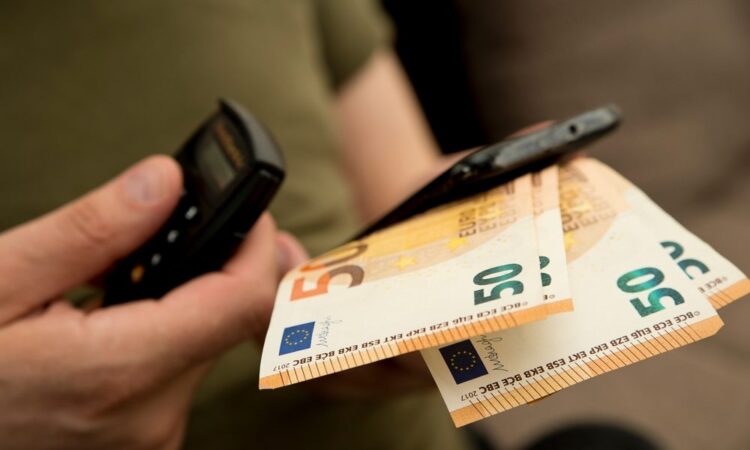“Expert verified” means that our Financial Review Board thoroughly evaluated the article for accuracy and clarity. The Review Board is made up of financial experts whose job it is to make sure that all of our content is fair and unbiased.
Bankrate is always editorially independent. While we adhere to strict , this post may contain references to products from our partners. Heres an explanation for . Our is to ensure everything we publish is objective, accurate and trustworthy. Bankrate logo.
Founded in 1976, Bankrate has a long track record of helping people make smart financial choices. We’ve kept this reputation for more than 40 years by making it easier for people to make financial decisions and giving them confidence in what to do next.
Bankrate follows a strict editorial policy, so you can trust that we’re putting your interests first. Our content is written by professionals with a lot of experience and is edited by experts in the field to make sure it is fair, correct, and reliable.
Our banking reporters and editors focus on the points consumers care about most — the best banks, latest rates, different types of accounts, money-saving tips and more — so you can feel confident as you’re managing your money. Bankrate logo
Bankrate follows a strict editorial policy, so you can trust that we’re putting your interests first. Our award-winning editors and reporters create honest and accurate content to help you make the right financial decisions. Here is a list of our banking partners.
We value your trust. Our mission is to provide readers with accurate and unbiased information, and we have editorial standards in place to ensure that happens. Our editors and reporters thoroughly fact-check editorial content to ensure the information you’re reading is accurate. We maintain a firewall between our advertisers and our editorial team. Our editorial team does not receive direct compensation from our advertisers.
Bankrate’s editorial team writes on behalf of YOU – the reader. Our goal is to give you the best advice to help you make smart personal finance decisions. We follow strict guidelines to ensure that our editorial content is not influenced by advertisers. Our editorial team receives no direct compensation from advertisers, and our content is thoroughly fact-checked to ensure accuracy. So, whether you’re reading an article or a review, you can trust that you’re getting credible and dependable information. Bankrate logo
Banks play a crucial role in managing money and enabling financial transactions in the economy. However, most people don’t realize that banks do not store or keep large amounts of physical cash or money in their vaults. Instead, banks only keep a fraction of deposits as cash reserves and lend out the rest to earn interest. So how do banks actually store money? Let’s find out.
How Banks Work
Banks help people who want to save money and people who need loans get the money they need. People who put money into their bank accounts make those funds available for the bank to lend to other people. This is how banks earn interest income and make profits.
Banks are required to hold a percentage of deposits as cash reserves to meet withdrawal and transaction needs. This reserve requirement is typically 10% in the US. For example, for every $100 deposited, the bank must keep $10 cash in its vault and can lend out the remaining $90. The bank keeps just enough physical cash to handle everyday transactions.
Do Banks Store Cash in Vaults?
Most banks have sturdy vaults on their premises to store cash and other valuables securely. However, contrary to popular belief, these bank vaults do not contain huge stacks of bills and coins at all times.
Banks tend to keep only enough cash in the vault to meet their anticipated transaction needs Very small banks may only keep $50,000 or less on hand, while larger banks might keep as much as $200,000 or more available for transactions This surprises many people who assume bank vaults are always full of cash.
Banks estimate their daily cash transaction needs based on factors like number of branches, customer traffic, seasonal changes, and upcoming holidays. They order just enough currency from the Federal Reserve Bank to stock their teller drawers and vaults accordingly. Any extra cash is moved off-site to central bank facilities for efficiency.
Where Do Banks Store Most Money?
Physically storing and securing large amounts of cash is inefficient for banks. So where do they keep customer deposits? Here are the main ways banks store money:
-
Electronic bank reserves: Most money is held in digital accounts at the Federal Reserve Bank. This allows banks to efficiently transfer funds using electronic payments.
-
Customer loans: When banks lend money that they have on deposit to people who want to borrow it, that money moves around the economy. Interest earned on loans is a major profit source.
-
Securities investments: Banks invest a portion of deposits into government bonds, securities, etc. to earn investment income.
-
Physical cash reserves: As discussed earlier, only a small fraction is kept as vault cash to facilitate daily transactions and withdrawals.
-
Interbank lending markets: Banks borrow and lend excess reserves to each other on an overnight basis to manage liquidity.
How Do Banks Track Money?
While physical money is minimized, banks use highly sophisticated IT systems to track and record all financial transactions and account balances. This allows customers to conveniently access their money from any branch location or ATM.
Behind the scenes, banks keep a full digital record of all account history transactions, including deposits, withdrawals, transfers, and other transactions. Strong databases give them real-time information on how much money is in customers’ accounts so they can authorize transactions. Modern data analysis and reporting give information on risk management, cash flow, and liquidity.
In addition to computerized accounting systems, banks use stringent cash handling procedures, surveillance systems and audits to prevent fraud or loss. So even though little cash is kept on-site, banks still track every single dollar efficiently.
Impact of Digital Banking Trends
More and more people don’t need to carry or handle cash thanks to new digital payment technologies. With debit cards and electronic transfers, you can send and receive money without using cash.
Mobile and internet banking also enable remote transactions. As a result, over-the-counter teller transactions are declining as customers shift online. This is allowing banks to centralize cash handling into fewer centralized vaults and branches.
Initiatives like digital wallets and P2P apps facilitate electronic money movement. Cryptocurrencies like Bitcoin also threaten to disrupt traditional banking. As digital payments keep rising, expect bank’s reliance on physical cash to drop even further.

How we make money
You have money questions. Bankrate has answers. Our experts have been helping you master your money for over four decades. We continually strive to provide consumers with the expert advice and tools needed to succeed throughout life’s financial journey.
Bankrate follows a strict editorial policy, so you can trust that our content is honest and accurate. Our award-winning editors and reporters create honest and accurate content to help you make the right financial decisions. The content created by our editorial staff is objective, factual, and not influenced by our advertisers.
We’re transparent about how we are able to bring quality content, competitive rates, and useful tools to you by explaining how we make money.
Bankrate.com is an independent, advertising-supported publisher and comparison service. We are compensated in exchange for placement of sponsored products and services, or by you clicking on certain links posted on our site. Therefore, this compensation may impact how, where and in what order products appear within listing categories, except where prohibited by law for our mortgage, home equity and other home lending products. Other factors, such as our own proprietary website rules and whether a product is offered in your area or at your self-selected credit score range, can also impact how and where products appear on this site. While we strive to provide a wide range of offers, Bankrate does not include information about every financial or credit product or service.

- Banks dont maintain all of their deposits in a cash reserve. Instead, banks may lend the money you deposit to other parties in the form of loans, and may even use the money towards other investments.
- Typical investments for banks include government bonds, which are relatively low-risk and provide steady returns.
- A bank run — which can lead to a bank failure — occurs when a banks cash reserve isnt enough to meet customer withdrawals. Thats when FDIC insurance comes into play.
Banks are intermediaries between depositors and borrowers. The money you deposit into a bank is then lent out by the bank in the form of a variety of loans. But the process, when broken down, is often much more complicated than a bank simply taking deposits and lending them out.
Where do banks invest your money?
Banks use your deposits to lend money to other customers, but they also invest the money in:
- Government securities. These include Treasury bonds, notes and bills. These are safe, low-yield investments used to manage risk and meet regulatory requirements.
- Corporate securities. Banks sometimes invest in bonds or equities, but this is typically limited and regulated due to higher risk.
- Interbank lending. Banks lend to each other in the short term to meet liquidity needs or earn a small return.
- Central bank reserves. Banks may keep a portion of your deposit in reserve accounts at the central bank, earning interest the same as consumers do on savings accounts.
Although you don’t directly choose where your deposits are invested, you might be concerned about how your bank chooses to invest your money, especially if you care about finding a bank that aligns with your values.
If you’re concerned about environmental impact, for example, you could look for a bank that lends to environmental initiatives. One way to find an environmentally friendly bank is to look for B-Corp or GABV certifications, which both require that a bank meets certain standards to reduce negative environmental impact.
How Much Cash Is Too Much To Keep At Home?
FAQ
Is it illegal for banks to keep your money?
A federal law, the Expedited Funds Availability Act (EFA), or Regulation CC, provides exceptions that allow banks to delay or “hold” funds deposited by check for an extended period of time. When this happens, you must be given a notice stating the reason for the hold and when your funds are available for withdrawal.
Where do banks keep physical cash?
A commercial bank’s vault cash is its own money, like bills and coins that are currently in circulation. It is kept in the bank’s vaults.
Do banks keep your money?
Only a small portion of your deposits at a bank are actually held as cash. The rest of your money (the majority of the bank’s assets) is invested by the bank into vehicles such as consumer or business loans, government bonds and credit cards. Borrowers have to pay the bank back with interest. May 28, 2024.
Can I withdraw $20,000 cash from a bank?
Often, banks will let you withdraw up to $20,000 per day in person (where they can confirm your identity).
